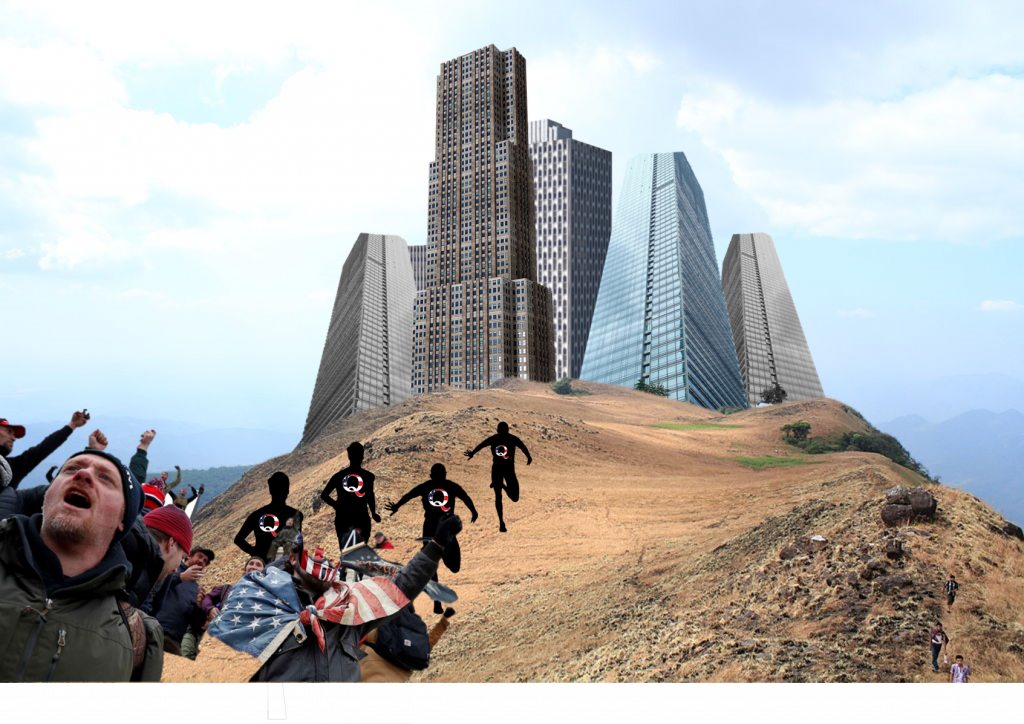When Ronald Reagan declared that America is a “shining city on a hill,” he probably didn’t realize that he was planting the seeds of its potential destruction.
Many of the divisions currently roiling the United States result from social and economic inequality. Most of the nation’s wealth is held by a small number of companies and individuals. As the poor mostly remain poor, and the middle class shrinks and stagnates, people take notice. It’s hard not to feel frustrated and abandoned when the system favors the rich over your family. Jeff Bezos having more money than he can spend does nothing for a midwestern household that can’t make a mortgage payment or has difficulty keeping food on the table. Bezos is building a yacht so immense it will need a subsidiary yacht for his helicopter. He’s so wealthy he’ll soon ride into space on his own rocket ship.
When Reagan was elected president, the highest income tax rate was seventy percent. It had been lowered from a top rate of ninety-one percent, a post-war tax burden the Eisenhower administration had left in place. Both were remarkably high by current standards and Reagan made tax reduction a cornerstone of his economic program. He lowered it initially to fifty percent, then twenty-eight percent.
Poor and middle-class taxpayers didn’t pay the highest rate and did not benefit from the reduction; it was a windfall for only the highest earners. The Reagan administration argued that the windfall for the wealthy would benefit society through spending and investing, the infamous “trickle-down” theory advanced by economist Arthur Laffer. The theory is Laffable.
The rich benefited far more than the poor and middle class. While their increased spending did have some economic benefit and there was a certain amount of investment that grew the economy, they personally accumulated substantial capital wealth. The rich spent much of their new income on real estate and securities, increasing their personal net worth. Then the second shoe dropped: Congress lowered capital gains taxes. Consequently, the wealth flowed to higher earners and stayed there. The number of American billionaires grew, but the poor remained poor and the middle class stagnated.
In his seminal work, Anatomy of Revolution, political scientist Crane Brinton identified the “J-curve” as a frequent cause of political revolutions. The “J-curve” is a line on a graph that tracks a reversal in the economic well-being of a population. When people sense they will not be able to meet their goals and expectations and believe they are falling behind economically, they get restless. That restlessness can metastasize into political violence.
Welcome to 21st century America. The wealthiest among us, from Bezos to the Koch Brothers, watch comfortably as their less well-off countrymen battle one another over what they believe is a shrinking portion of the economic pie. Americans are not uniformly slipping into poverty, but feel unease as the poverty rate remains stubbornly high, most families are one paycheck away from indigence, and workers in the so-called gig economy work to stay above water without sick leave, vacation leave, or retirement. The city on a hill has lost its sheen.
Scholars and journalists have been writing about the growing inequality for decades. The “Occupy Wall Street” protest by the so-called “99% movement” was a direct reaction. It was a traditional political movement; its successors are not.
The 99% movement focused on the wealthiest and their enablers when they argued for a more equitable and fair distribution of wealth. They didn’t achieve their goal because the wealthiest individuals and companies invested in politicians who protected their status. As a result, the minimum wage is not a living wage, sick and vacation leave have not become national standards, and too many people find medical care out of reach. Meanwhile, Jeff Bezos prepares to ride his rocket into space.
The 99% movement had the right target, but its successors do not. The restlessness has turned Americans against each other while the rich remain untouched. That is deliberate, not coincidental. Donald Trump is the poster boy for internal dissent. The former President, aided and abetted by irresponsible media outlets, focused his supporters’ anger against fellow Americans – but not the wealthy. It’s dark side tai chi that fueled the tribalism that endangers the American experiment. Trump tells his white supporters their enemy is not the rich, it’s minorities. Don’t fight the Koch Brothers or Goldman Sachs. Fight Black Lives Matter and antifa – whatever that is. (Good luck locating an antifa headquarters or leadership!) Fight Muslims. Fight immigrants, or they will take your jobs.
This “fight each other but spare the rich” strategy reshaped political discourse from an argument over how to govern society into an existential death match. It’s no longer about taxes and potholes, it’s about survival. The other side doesn’t just want you to lose; it wants you dead.
What happens when tribalism merges with social media? You get QAnon, which asks: why are the poor and middle class in stagnation while the rich get richer? Their answer: an evil elite composed of Satan-worshipping child traffickers and cannibals is secretly running society. While the concept is beyond daffy, millions of Americans find solace in it. They are frustrated and need somebody to blame — to hate — and QAnon is their drug of choice. It’s mass hysteria spawned by economic inequality and fueled by irresponsible politicians and media. Reagan’s rainbow bends not to a pot of gold, but to a boiling cauldron.
I can’t see the shining city from here, but I know it’s still there. I can tell from the sewage flowing downhill.
© 2021 by Mike Tully
<<< YOU CAN READ / DOWNLOAD A PDF VERSION BY CLICKING HERE >>>


Be First to Comment